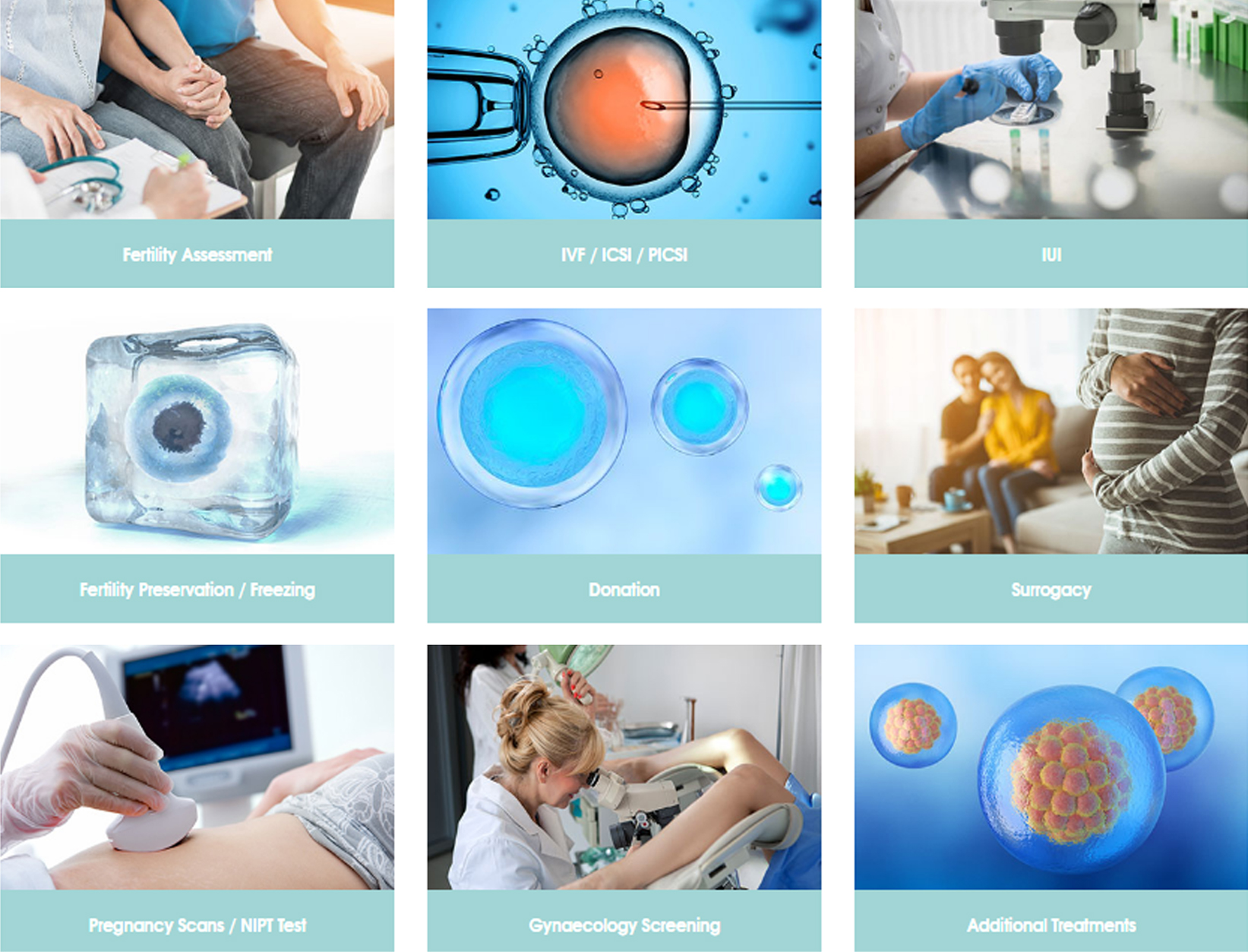26th February 2022
Fertility
Follow the latest news and developments in the world of fertility.
< View all our fertility news and posts


There are many misconceptions around infertility and fertility treatments in general and we’ve decided to explain why some of these mislead people or couples trying to conceive.
01: Infertility Is a Female Problem – Myth Busted
Infertility is the inability of a person to reproduce by natural means and can occur in both men and women.
Heterosexual couples may struggle to conceive naturally either due to fertility problems that may occur in one partner or even both. Heterosexual couples can also experience unexplained infertility which means that the available examinations and tests conducted may not explain what causes the infertility.
LGBTQ couples or single people can also struggle with fertility. Most commonly called: situational infertility, because biologically they cannot have a child. In other words, they may need fertility treatments, like insemination with a sperm donor, or treatment using donor gametes (donor eggs/donor sperm/donor embryo) or the help of a surrogate to carry the pregnancy.
In cases of same sex female relationship they may face medical causes of infertility on top of situational infertility, it may be that one or both female partners, are unable to conceive because they have an underlying fertility problem and may require fertility drugs or other treatments in addition to needing a sperm donor.
02: Male ejaculation equals fertility – Myth Busted
Men with male infertility have no visible or obvious signs that something is wrong.
A healthy erectile function and normal ejaculation does not guarantee that your sperm is functionally normal. Some men have 100% antibodies, which may be the reason no fertilization with an egg happens despite normal sperm count numbers.
It’s a myth that if a man’s fertility is compromised, then his sexual performance will also always be affected, as some will not have any sexual problems.
Abnormalities with sperm count, shape, and movement are not always the cause of male infertility. You can’t tell there is a problem with your sperm only by looking at semen. The functionality of sperm can be tested using some special tests like DNA fragmentation tests or Hyaluronan Binding Assay (HBA analysis), which give more information on the functional analysis.
Semen is also made up of fluids and mucus rich in sugars, amino acids, hormones, and minerals, all intended to support the sperm cells and help keep them alive outside of the man’s body and if any of these parameters are not optimal, this may also contribute to no fertilization.
03: Age doesn’t matter, there’s Always IVF – Myth Busted
There is a common misconception that if age-related infertility does strike, you can always do IVF. This is far from the truth, because just as your natural fertility declines with age, your odds for success with IVF treatment also decline with age.
For women less than 35 years of age, who have normal ovarian reserve, 30- 35% percent of IVF cycles, will lead to the livebirth of a baby. For women ages 38 to 40, the success rate drops to almost half. Very few women aged 43 to 44, will have a livebirth using their own eggs.
Women may opt to consider donor egg treatment if age-related infertility stands in the way of parenthood, but treatment using donor eggs may not always guarantee success.
04: Clomid Can Help Anyone Get Pregnant Faster – Myth Busted
Clomiphene citrate (Clomid) is an anti-estrogen drug to stimulate ovulation in women with irregular or absent ovulation. But if you don’t have any of these problems, ovulation induction may not help. In fact, Clomid reduces the fertile quality of cervical mucus. It makes cervical fluids stickier and less abundant. Cervical mucus helps sperm survive and swim from the cervix up into the reproductive system. There are several other drugs used for ovulation induction viz Tamoxifen, Letrozole.
If you don’t have problems that indicate ovulation induction, then it may not improve your fertility.
05: Egg reserve can reduce or finish if many eggs are collected at egg collection – Myth Busted
In a natural cycle, depending on ovarian reserve, women ovulate with mostly 1or 2 eggs, and have some others which wither away in that month as not all of these are suitable for ovulation due to natural hormone levels. In treatment cycles medication helps stimulate most of those recruited follicles in that month to get them ready for egg collection. In the following month there will be newer follicles recruited again depending on ovarian reserve.
06: IVF Frequently leads to higher-order pregnancies- Myth Busted
Out of all the available types of fertility treatments, IVF is the least likely to lead to a higher-order pregnancy with triplets, quadruplets or more. With IVF treatment, embryos are transferred back to the uterus, and most reproductive specialists will transfer one and in some circumstances not more than two embryos at a time. In fact, elective single embryo transfer is becoming more popular. This is the safe option recommended to most patients to have a healthy, singleton pregnancy. There is always still a minuscule risk of identical twins despite single embryo transfer.
07: After embryo transfer, the embryo slips out if you stand up quickly – Myth Busted
This is a common concern in women having an embryo transfer that mobilizing quickly or going to the toilet will make the embryo slip out, which is not true as the embryo is microscopic in the folds of endometrium, and no amount of movement will make it slip out.
Another common query amongst women after embryo transfer is whether they should just lie in bed. In fact moving about is recommended for good circulation and vital for minimizing risks of clots. Gentle walks in the fresh air are good for healthy pregnancy.
08: After IVF you cannot have an Ectopic pregnancy – Myth Busted
Putting the embryo back in the uterus does not mean it cannot transport back further and implant in any other ectopic area like the fallopian tubes, cervix , ovary or cornual area of uterus: which is not conducive to a healthy pregnancy and may entail surgical management in some cases. This is higher where there is underlying disease pathology in these ectopic areas.
09: If you already have a child, you don’t need to worry about Fertility- Myth Busted
Secondary infertility is when a couple has difficulty getting pregnant after they have conceived a child naturally in the past. Unfortunately, a previous successful pregnancy doesn’t guarantee fertility success in future.
Changes come with time and age in fertility. It could be related to an underlying new medical or gynaecological condition or a fertility condition that always existed and got worse and while it didn’t prevent pregnancy in the past, now it has become a problem.
Occasionally a previous pregnancy could cause a fertility problem is cases of surgical complications or infections after childbirth.
10: IVF treatment will definitely get you Pregnant – Myth Busted
This simply isn’t true. Success after any form of fertility treatment is not guaranteed.
With treatments, you could move to using an egg donor, sperm donor, embryo donor or a surrogate and may still not be successful. This process can include tremendous amount of time, emotions and financial cost.
Moving on is an option everyone should be able to take without any guilt that the next cycle could have been the one. Yes, maybe it could have been but it also might not have, and you are only doing your best in your situation.
Infertility and fertility treatments can be overwhelming as there is a lot of misleading information. How can you know what’s right in your case? Talk to a fertility specialist doctor for clarifications on your personal situation, medical diagnosis and treatment options.
NEXT/PREVIOUS:
International Women’s Day «
Surrogacy on BBC NEWS and BBC Breakfast »






